
Lot 68
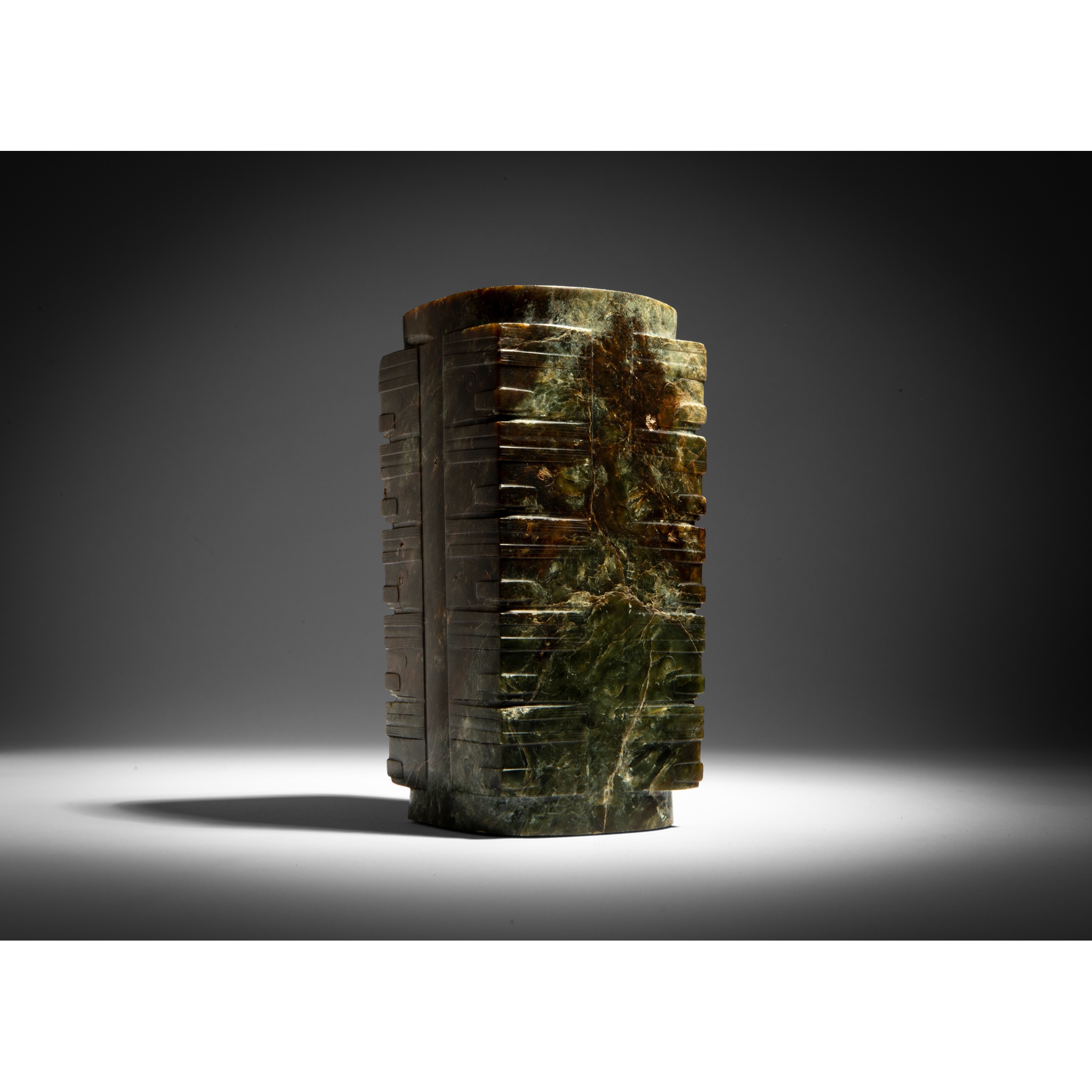
GREEN JADE CONG ◆
NEOLITHIC PERIOD, LIANGZHU CULTURE
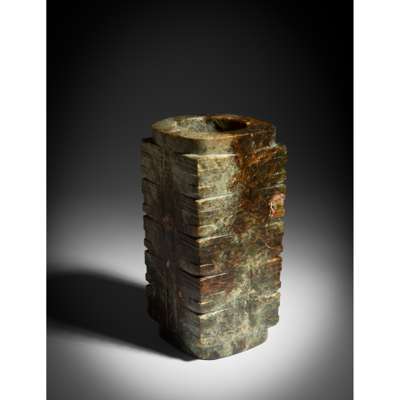
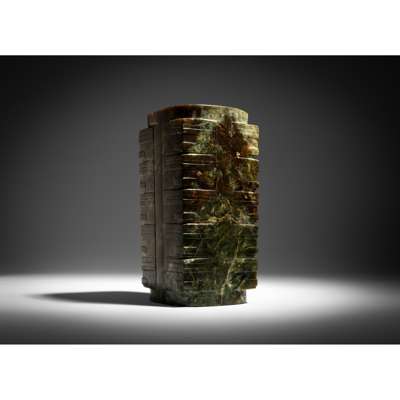
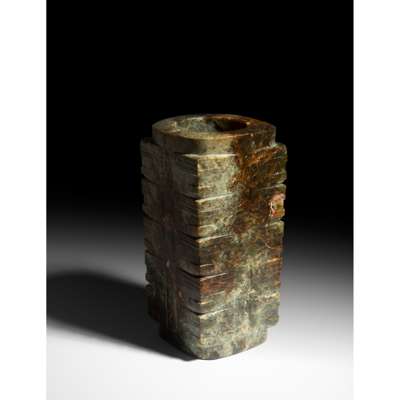


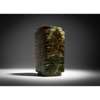
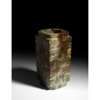
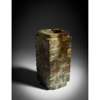
Fine Asian & Islamic Works of Art
Auction: 5 November 2020 at 14:00 GMT
Description
新石器時代 良渚文化 玉琮
of conventional form, carved as a cylindrical tube within a square form, steadily diminishing from top to bottom, the sides subdivided into five sections marked by horizontal division, each of the five sections presents a face at each of the four corners, in this instance, ridges represent both the headbands and the nose clearly, while the concentric circles symbolise the eyes, the jade of dark green colour, showing areas of grey and brown veining with some crystalline inclusions
Dimensions
15.3 cm high, 7.5cm wide
Footnote
Provenance:
Private collection, Far East; acquired from Centre of Asian Antiques gallery in Houston, USA in 2008; previously acquired from a Taiwanese gallery in 1988
Published in Ben Janssens Oriental Art TEFAF 2019 catalogue, pp. 2-3;
Exhibited at TEFAF (The European Fine Art Fair) Maastricht, 2019.
Lot Essay
The cong is one of the principal jade types of the Neolithic period. The Liangzhu people, lived around current Lake Tai in Jiangsu province, developed several of the most enduring jade forms, including the cong and the bi disc.[1] They inherited their skills and traditions from the Dawenkou and Hongshan people. The purpose of the cong tube, as with the bi disc, is not entirely clear, although both are thought to have had a ceremonial and possibly also a protective function. One popular interpretation is that the cong symbolises earth, while the bi disc symbolises heaven.
This impressive jade cong is one of the most exquisite examples of its kind. There are a number of relatively large cong preserved in major museums in the East and West. According to Jessica Rawson, these pieces may all have come from one or two large tombs discovered in the late 19th or early 20th century.[2] Two slightly smaller jade cong of closely comparable decoration and composed of five sections on either side are respectively in the collections of the Minneapolis Institute of Arts (bequest of Alread F. Pillsbury, museum number 50.46.304) and the Haining Museum.[3] Three examples of similar size and carved into six sections are respectively in the collections of the National Palace Museum, Taipei (museum number Gu Yu故玉2038), the Changshu Museum,[4] and the Liangzhu Culture Museum.[5]
[1] Rawson, J. Chinese Jade from the Neolithic to the Qing, British Museum, London, 1995, p. 122
[2] Rawson, J. op. cit. p. 128
[3] This piece was excavated from tomb no. 1 at Shedunmiao site, Haining, Zhejiang province. In Gu, Fang ed. The Complete Collection of Jades Unearthed in China, vol. 8, Zhejiang, Ke Xue Chu Ban She, Beijing, 2005, p. 32
[4] This piece was excavated from Jialingdang site, Changshu, Jiangsu province. In Gu, Fang ed. op. cit. vol. 7, Jiangsu, Shanghai, p. 38
[5] Jades of the Liangzhu Culture- The Dawn of Chinese Civilization, the Liangzhu Culture Museum and the Art Museum, The Chinese University of Hong Kong, Hong Kong, 1998, no. 4, pp. 28, 78







